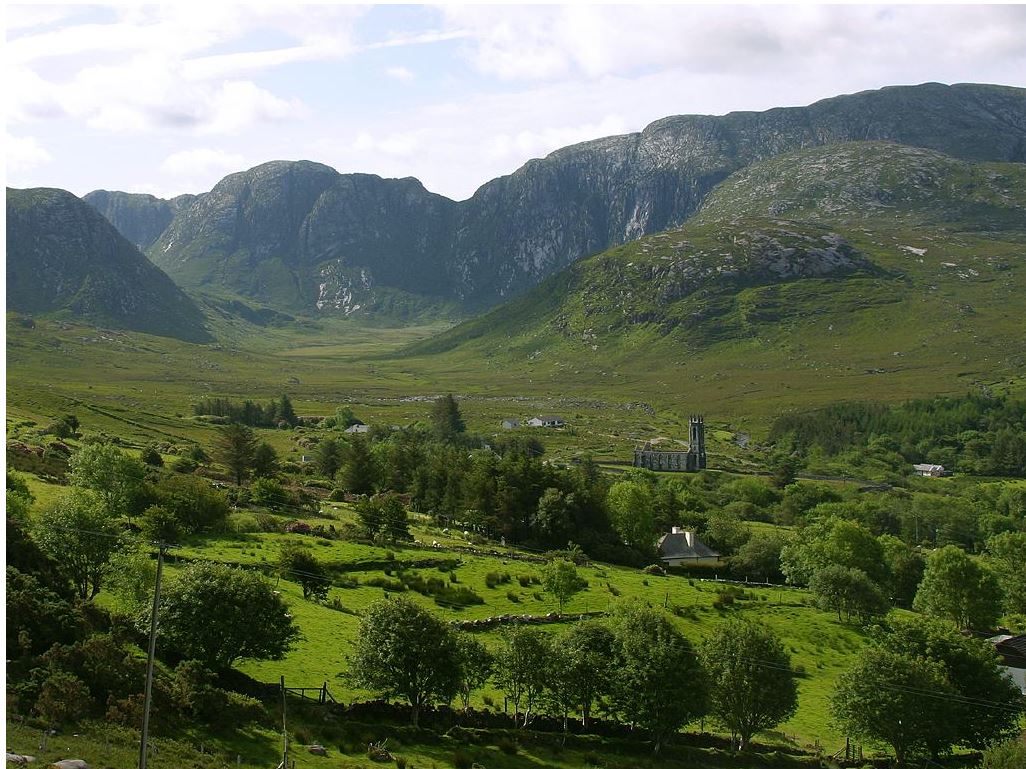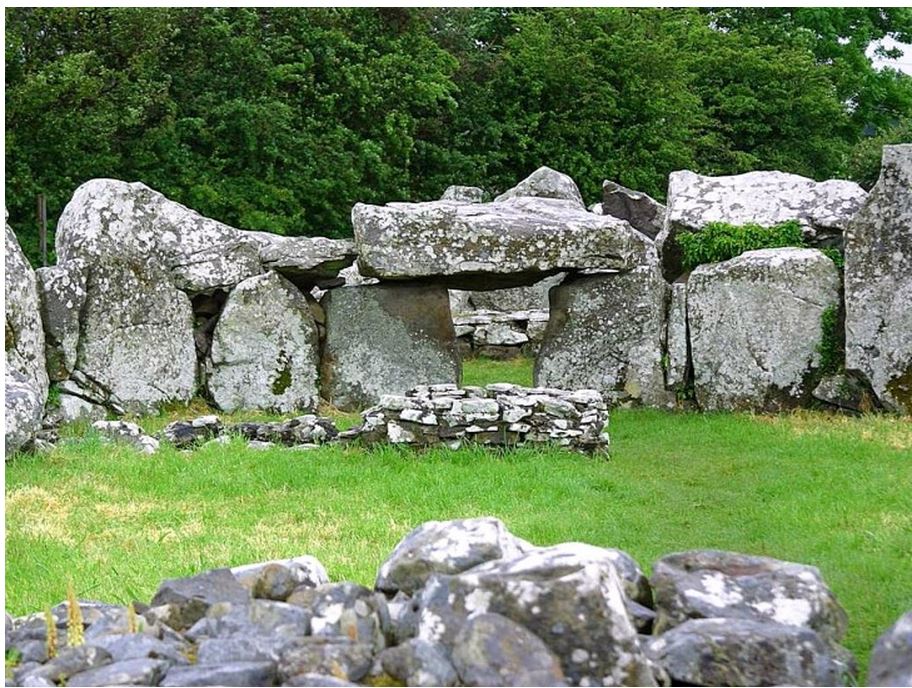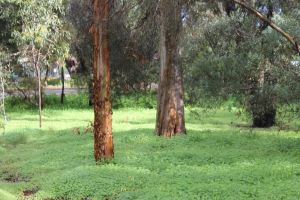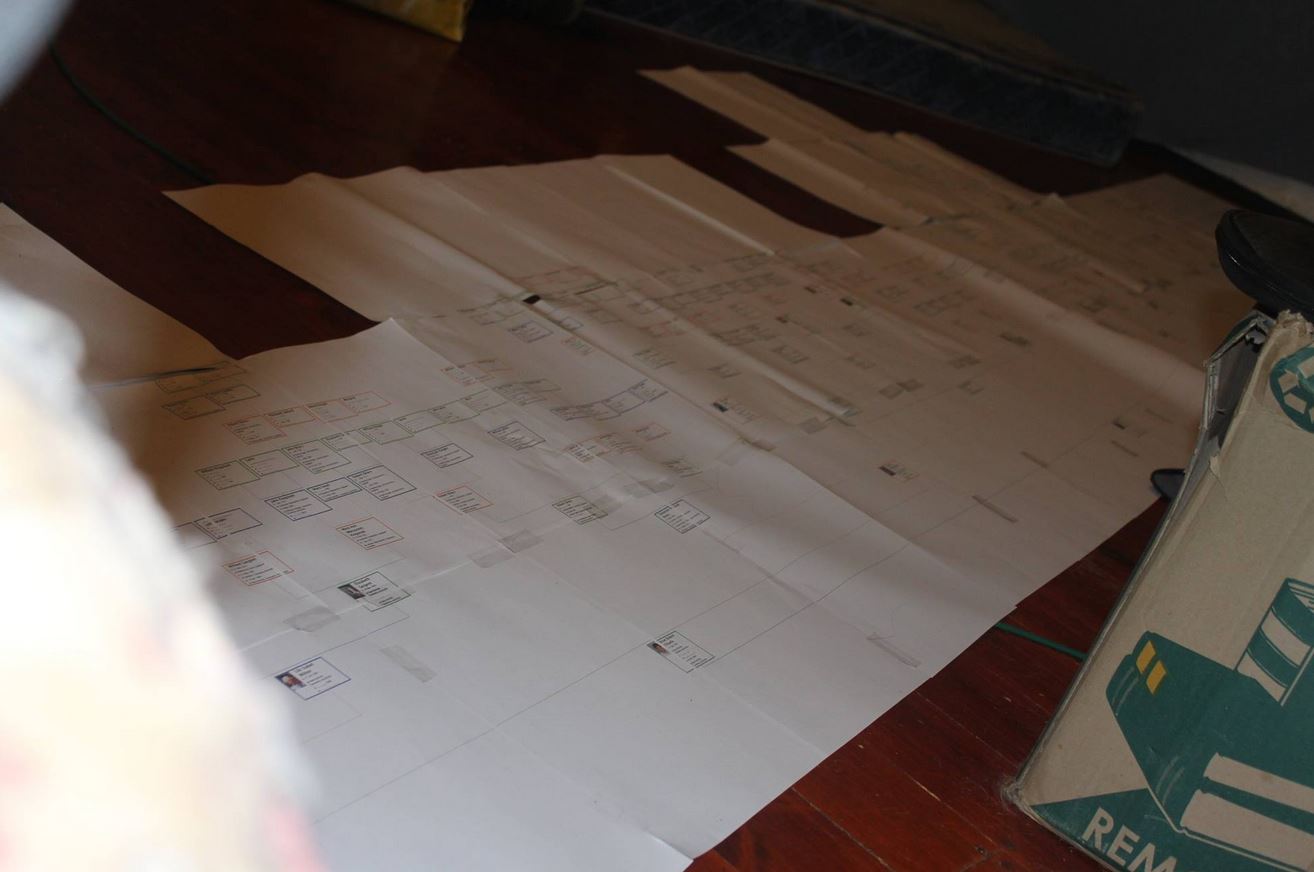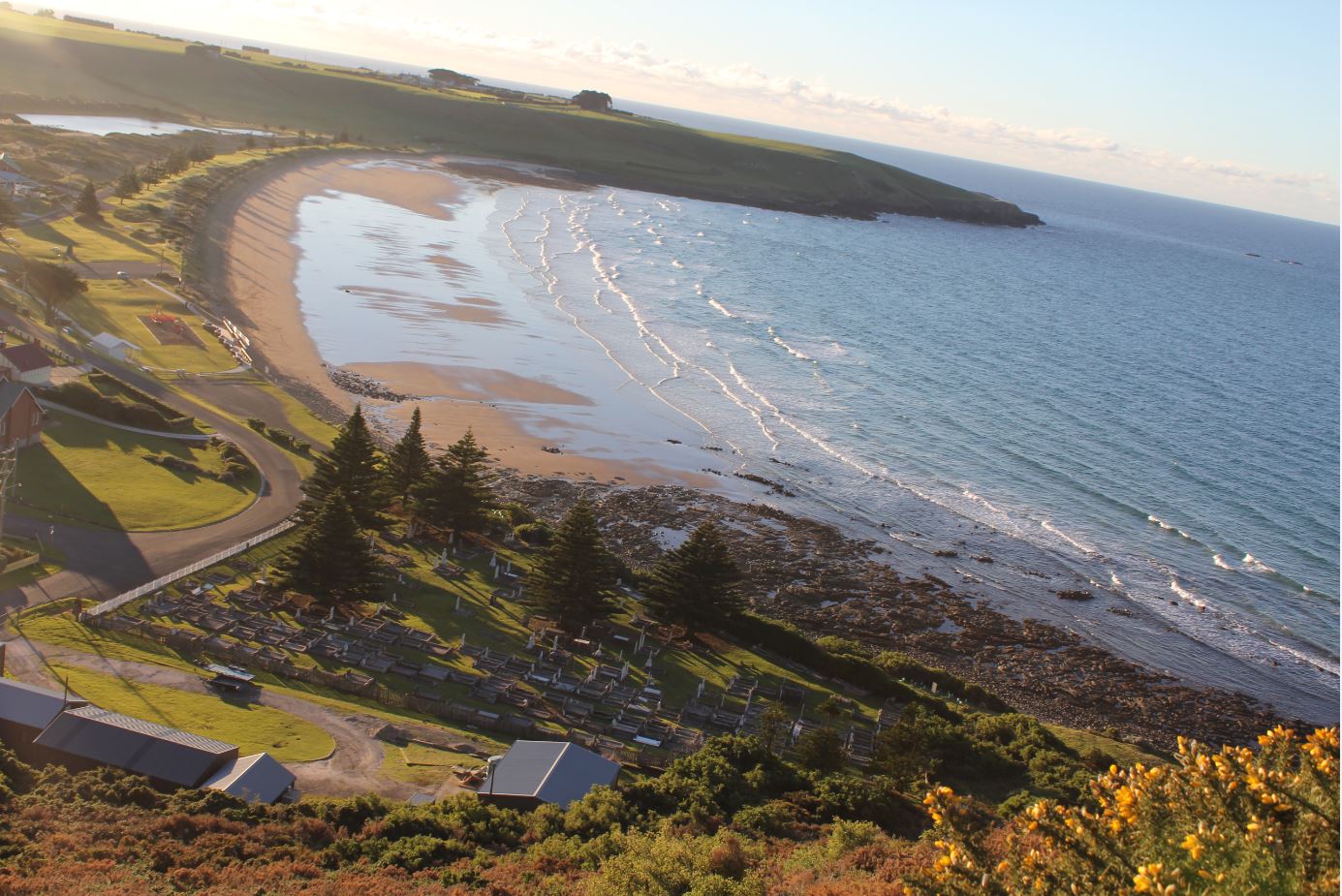I have this data in a variety of formats, including my family tree which comes with tools to calculate relationships, but I have found my basic document to be immensely useful.
For example, here are the possible MRCA’s with my son’s 5th cousins, separate columns for ‘Paternal’ and ‘Maternal’:
The document is basically a memory prompt because as I have more and more kits come through, it is easy to get mixed up. My father’s closest 2nd-4th cousin match, for instance, has a tree jammed full of McIsaac, McLeod and McEachern ancestors – all names strong on my mother’s side. I keep spotting those names and getting excited, then having to remember that no, this is my father he matches with, not my mother. A list like this helps me stay focused. I made a document for my father but it doesn’t look like this at all. Beyond his 3rd cousins, the list becomes full of ‘unknowns’. I hadn’t realised how much was missing from his tree until I did this list.
A few days ago my father’s results completed tokenization on Gedmatch and became available. His top four matches were myself, my son, Sarah who is his known 3rd cousin once removed, and then comes Polly.
Sarah’s gedmatch results showed with a likely common ancestor at distance 4.1 which is in fact spot on – her common ancestor is four generations above my father, and five generations above Sarah. Polly shows as an expected generational distance of 4.3. There is another match also with an expected generational distance of 4.3, who is not a match with Polly, and after that comes the 2nd-4th cousin match I referred to above who has lots of McIsaac and McLeod. He shows on Gedmatch as having a common ancestor 4.4 generations above my father.
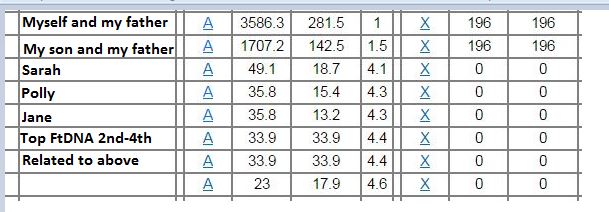
My father’s top matches with names altered for privacy but other details exact. Columns are total DNA match, largest segment match, predicted distance to common ancestor, then X total and largest segment.
Late at night about four days ago, I emailed Polly because her match was next on the list. I received an instant response from her great-nephew who manages her kit. He has his own kit, his mother’s and Polly’s who is his mother’s paternal aunt. He and his mother also show as a match with my father, but much further down the list. Polly is a long way down my own match list but I do not match the niece or great nephew.
He sent me Polly’s basic pedigree chart which contained names but no locations or dates. I immediately spotted an ancestor of hers named Mary Ann Wolfe. My father’s great great grandmother was Maria Woulfe so I asked if his Mary Ann Woulfe came from Athea in Limerick, Ireland, where our Maria Woulfe came from.
While I waited for an answer, I found his ancestor on Find-A-Grave giving her parent’s names. To cut a long story short, Mary Ann Wolfe’s grandfather was buried in Templeathea, Limerick, Ireland and this looks very much like the same family.
Irish genealogy is difficult to research from overseas. Very little is online and what is there tends to be transcriptions rather than digitized records. We are relying heavily on the accuracy of other people. A great number of handwritten records are difficult to read and what one person gets out of it might be different to what another does. You also miss the non-verbal clues. Was the record clear or smudged? Were there fifty baptisms on one day so they were most likely rushed? Did the handwriting look clear or as if written by someone without much education themselves? Was something crossed out and then rewritten as if they had misunderstood the initial information? Was the next entry in that register involving the same family? There is so much we miss with a transcription.
![Irish Cemetery By DavetheGrey [CC BY 2.0 (http://creativecommons.org/licenses/by/2.0)], via Wikimedia Commons.](https://historybylarzus.files.wordpress.com/2015/01/irishcemetery.jpg?w=300&resize=300%2C199)
Irish Cemetery By DavetheGrey [CC BY 2.0 (http://creativecommons.org/licenses/by/2.0)], via Wikimedia Commons. Nothing truly replaces a personal visit to a cemetery.
The details brought back by my family generally concur with the Find-A-Grave record which I had not seen before, and with a website on the Woulfe family of Limerick which I had also not seen before. However, the tree I have would place my father and Polly’s common ancestor way back about eight generations. Research is definitely required.
The Woulfe family come across as a stable and functional family. The family around Templeathea appear to descend from Maurice Woulfe born 1690 near Listowel in Kerry, and his wife Kathleen Riordan. Maurice Woulfe born 1690 had six sisters who remain unnamed but according to family legend, Maurice became head of the household at the death of his father when he was fourteen, and through hard work and sacrifice was able to provide dowries for them all. The family were very proud of that original Maurice and the way he kept his family from destitution. It makes sense that this story might pass down the family long enough to be recorded in writing. If true, it means six sisters who married and probably produced a mass of my unprovable DNA cousins. Certainly, the graves of many family members exist in Templeathea and provide some support for the story.

Listowel Bridge over the Feale River “Listowel bridge” by Created by Kglavin – Made by User Kglavin. Licensed under CC BY-SA 3.0 via Wikimedia Commons – http://commons.wikimedia.org/wiki/File:Listowel_bridge.jpg#mediaviewer/File:Listowel_bridge.jpg
Maurice and his wife Kathleen are reputed to have had five sons. Two of those sons were James born 1732 and Edmond Maurice born 1740. Our DNA match Polly is a descendant of James. My father and I are descendants of Edmond Maurice. James married Johanna McCoy and his descendants very considerately emigrated to the United States where they left some excellent records to enable the family to be researched. Edmond Maurice stayed in Ireland, married a mystery bride and his life records vanished in the years after his death, as happened with so many Irish records. The connection still seems a long way back for the match prediction.
Edmond Maurice Woulfe and his unknown wife had a son called Richard, born in 1765 who is apparently our ancestor. I have only the word of other researchers for this. Richard also married an unknown wife and had a son, Maurice Woulfe born around 1795 who lived in Dromadda who died after 1849. Maurice and his also unknown wife were the parents of Maria.
Up to this point, there were stories and the odd burial record but nothing concrete. I didn’t mind this too much. I had plenty of other family branches to look at first and was never too sure that this research was correct. But now we have a DNA match between two branches, involving a few generations on each side, and the only obvious common link is this Woulfe family at Templeathea.
As happens so much when DNA matches are involved, it’s time to re-examine this branch.
![Feale River near Listowel, By Larsoner at en.wikipedia [Public domain], from Wikimedia Commons](https://historybylarzus.files.wordpress.com/2015/01/fealeriver.jpg?w=300&resize=300%2C227)

























